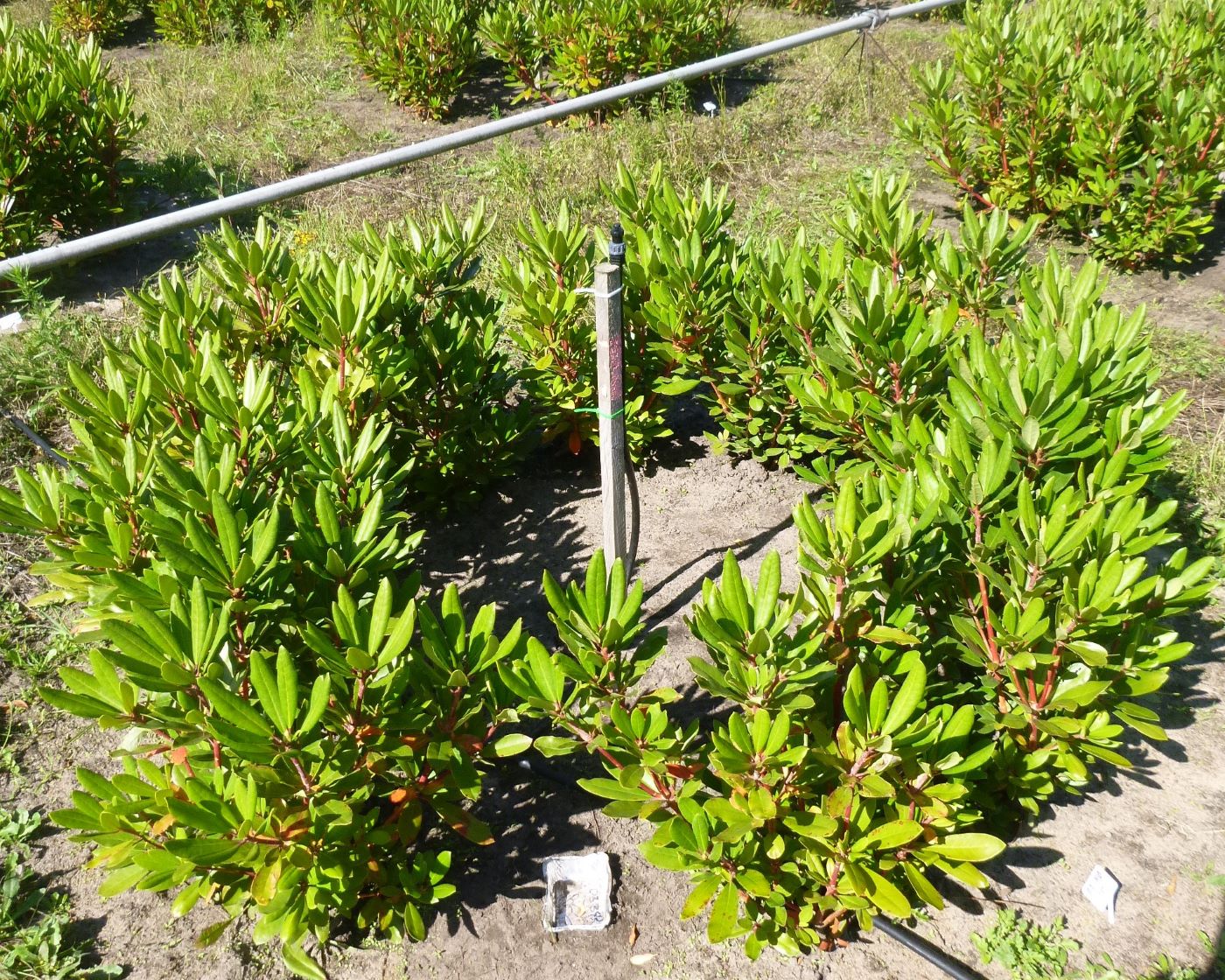Rhododendron ponticum (L.) is a highly invasive, non-native woody shrub that prevents tree regeneration and kills native flora. Achieving successful control of rhododendron can be difficult due to its thick waxy leaf surfaces, which discourage the absorption of foliar-applied herbicides.
The spray adjuvant Mixture B NF® has therefore been used for many years to improve the efficacy, absorption, and rainfastness of foliar applications of glyphosate.
We established an experiment to test if alternative non-hazardous adjuvants could be equally effective. Treatments were applied as foliar sprays and then subjected to artificial rainfall to examine rainfastness. We found that the non-hazardous adjuvants Codacide Oil® and Toil® (both based on rapeseed oil), and also SU Wett®, offered little or no benefit to the efficacy or rainfastness of glyphosate applications to rhododendron. However, further research using these adjuvants on other weed species is recommended.

A view of the field experiment used in this research.
The only treatment in our study that showed acceptable levels of rhododendron control was glyphosate plus Mixture B NF®. Current recommendations for the control of rhododendron are therefore still valid. When foliar sprays of rhododendron bushes are required, apply 2.88 – 3.60 kg a.i. ha-1 glyphosate and add Mixture B NF® adjuvant at a rate of 2 per cent of final spray volume. A minimum rain-free period of 6 hours should occur after application of glyphosate products to any weed type, but if there is a risk of rainfall occurring earlier than this, and the application cannot be delayed, the use of Mixture B NF® is likely to improve rainfastness, reduce run-off and improve control.
